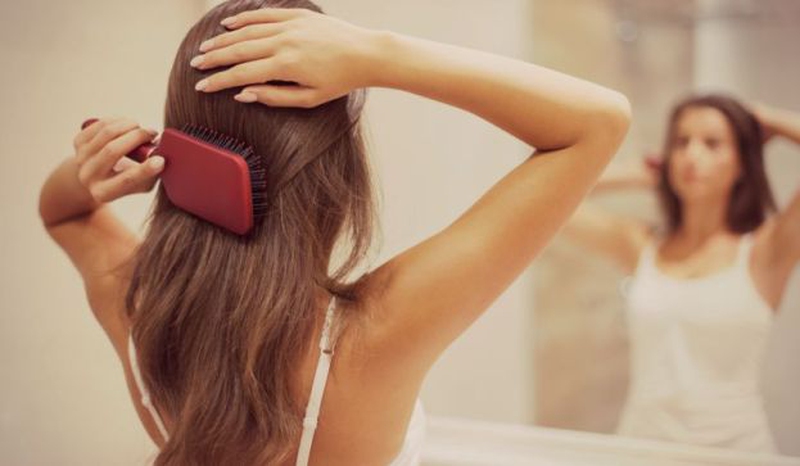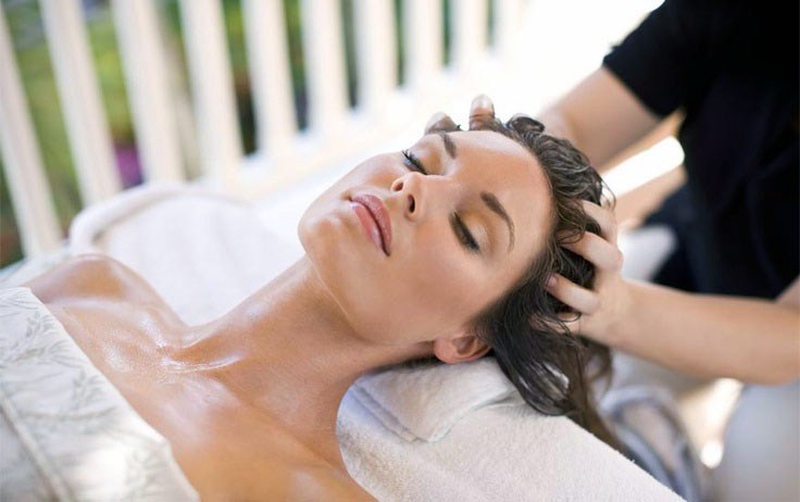Many new mothers notice excessive hair loss a couple of months after delivering a baby. Apart from cleaning and feeding the baby, the continuous shedding of hair is likely to make you more worried. However, this hair loss is normal and can be relieved with the correct methods.

Postpartum Hair Loss-What Causes It?
Under normal circumstances, you shed about 80-100 hair per day. However, increased estrogen levels during pregnancy causes more hair to remain in the resting phase for a longer duration. Due to this, your hair remains on your head instead of falling and you get thicker and lustrous hair during pregnancy. This effect is compounded by the increased circulation and volume of blood during pregnancy, which also results in less than normal hair fall.
When you deliver your baby, your hormone levels reduce and your hair starts to fall out in bigger clumps than normal. The total amount of hair loss is not greater than the amount you would have lost during the nine months; it just appears more because you are losing your hair all at once. Postpartum hair loss can start from any day after the birth of your baby and it may continue in some cases for as long as one year. It generally peaks at around four months post delivery; hence, if your little one is a couple of months old and you are still shedding clumps of hair, know that you are not alone.
Tips to Minimize Postpartum Hair Loss
Eat a healthy and well balanced diet
Include a variety of vegetables, healthy proteins and fruits in your diet to make sure that your body is receiving all the required nutrients. Foods recommended by health experts to improve health of hair include dark leafy green vegetables (for their vitamin C and iron content), carrots and sweet potatoes (for their beta carotene), fish (for its magnesium and omega-3 fatty acid content) and eggs (for the D vitamin).
Take vitamin and mineral supplements
Supplements should not substitute a healthy diet, especially when you have a baby and are breastfeeding. But they may supplement your diet if it is deficient in vitamins and minerals. While it is not shown that health of hair is affected by any specific vitamin or minerals, taking them is important for maintaining your overall health. It’s quite often recommended to take your prenatal vitamin supplements even after delivery, especially if your baby is breastfeeding.
Avoid styling tools and colors on your hair
Avoid heating tools to style your hair. Also avoid blow drying your hair too often. Let your hair dry naturally. Blow drying frequently weakens the hair from the roots. Don’t comb hair when they are wet. If you are doing so, use a comb with wide tooth to avoid hair loss. Brush your hair gently as brushing hardly may cause bigger clumps of hair to fall out. Avoid using hair sprays or gels on your hair as they may worsen your hair loss problem. Similarly coloring your hair frequently may also add to the problem of postpartum hair loss.
Do regular massage
Regular gentle massage on your scalp will not only increase the circulation of blood but also promote hair growth. Use lukewarm oil and gently massage your scalp using the tips of your fingers for 5-10 minutes once in a day. You can also use medicated oils such as Amla (Indian Gooseberry) oil or Arnica oil to massage your hair regularly at night to promote growth of hair. Rosemary oil is also recommended for healthy hair as it helps in supplying oxygen to the hair follicles, which results in hair growth. If you don’t want to apply oil, you can do dry massage of your scalp with your finger tips.
Use conditioner and shampoo that adds volume to your hair
Finding a conditioner and shampoo that is best for thin hair actually requires trial and error. Following are the recommendations from dermatologists regarding what to use and avoid:
Use a shampoo that voluminizes your hair: These types of shampoos contain ingredients such as protein that coat your hair, making them appear fuller.
Avoid shampoos that are labeled as “conditioning shampoo”: Such shampoos tend to contain heavy conditioners that may weigh the hair down and make them appear limp.
Use a conditioner that is formulated for finer hair: Such conditioners contain lighter ingredients that may not weigh the hair down.
Apply conditioner primarily on ends of hair strands: Applying conditioner to all of the hair and scalp tends to weigh your hair down.
Don’t use conditioners that are labeled as “intensive conditioners”: Such conditioners contain too heavy and thick ingredients and should be avoided.
Go for a new hairstyle
Certain hairstyles make hair appear fuller and are ideal when you have postpartum hair loss. You can consult an experience stylist and find out the style that suits you. Many new moms prefer to keep their hair short. A short hairstyle can make hair appear fuller. Short hair is also easier to manage with a baby.
When Should You Worry?
By your baby’s first birthday, you should regain your normal growth of hair. In case your hair does not get back to their normal fullness even after one year of giving birth to your baby, you should consult a dermatologist. There may be some other reason behind your hair fall. There are multiple reasons for hair fall and for effective treatment an accurate diagnosis is required.


View All Comments /Add Comment